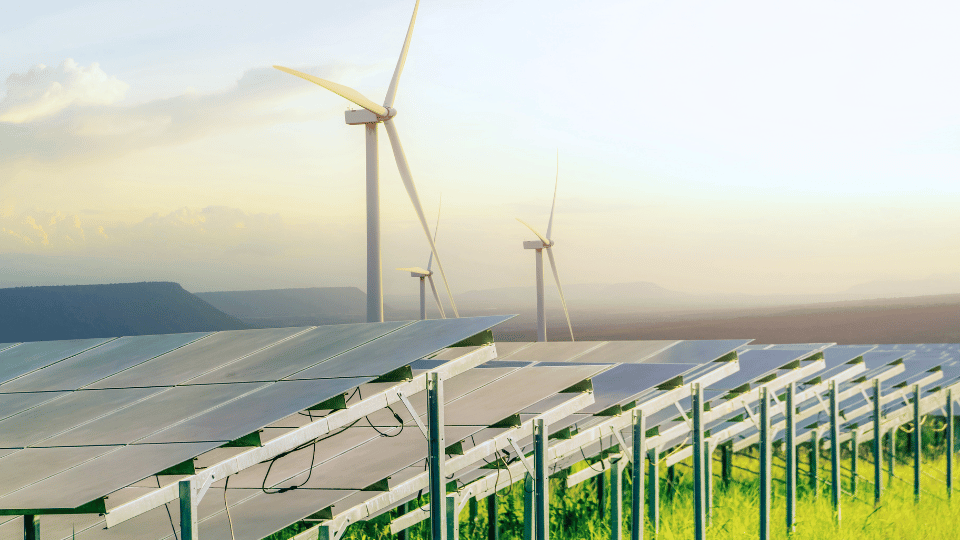Oman in ‘leap forward’ with Europeans and Koreans to use multi-GW wind and solar for green hydrogen
Image Source: NES Fircroft
Plans to produce huge volumes of green hydrogen and ammonia from wind and solar in Oman have become more concrete as the country’s national hydrogen firm Hydrom has signed deals with both European and Korean companies related to the HYPORT Duqm project to establish the Arabian sea port as gateway for global exports of green H2 and derivatives.
Belgian contractor DEME and the Oman’s national oil company OQ have signed a project development agreement with Hydrom to start detailed engineering for a 150 square km area at HYPORT Duqm, followed by the construction of both the renewable power and downstream sites where electrolysers to produce green hydrogen will be located, as well as green ammonia plants.
At the port in the special economic zone at Duqm, some 330,000 tonnes of green ammonia are slated to be produced in a first phase from about 1.3GW of wind and solar power; volumes are planned to increase to more than 650,000 tonnes of green ammonia in a second phase that will require over 2.7GW of wind and solar capacity.
“After nearly three years of joint development with our partner OQ, we are thrilled to accelerate our transformative journey towards a green hydrogen-powered future and to support Oman in achieving its ambitious green energy targets, while strengthening DEME’s long-term presence in Oman,” DEME Concessions managing director Martin D’Uva said.
“The project will harness the immense potential of hydrogen as a clean and versatile energy carrier, leveraging Oman’s strategic location and abundant renewable resources to establish a robust green hydrogen ecosystem.”
The HYPORT Duqm project is part of Oman’s Vision 2040 targets to reach a non-oil share of 90% of its gross domestic product (GDP) by 2040. To reach that, the Sultanate earlier had already announced plans to build a total of 25GW of wind and solar capacity through a consortium of OQ with developer InterContinental Energy and Kuwait-based Enertech that also envisions massive green hydrogen production and exports.
Green ammonia to Korea in 2030
Next to the DEME-OQ development, joint plans by French utility Engie and Korean steel giant POSCO for a further massive green ammonia project in Oman have also advanced.
The consortium – which also includes Samsung Engineering, Korea East-West Power Co. (EWP), Korea Southern Power Co. (KOSPO), and FutureTech Energy Ventures Company Ltd. (a unit of PTTEP) – has been awarded a 340 square kilometre land-block (Z1-02) by Hydrom in Duqm, where both renewable energy installations and downstream facilities can be built.
The land block is slated to include about 5GW of wind and solar plants, a battery energy storage (BESS) and a hydrogen plant that is slated to produce 200 kilotonnes of green hydrogen per year. The green gas will then be transported via a pipeline to the special economic zone at Duqm, where it will be converted into about 1.2 million tonnes of green ammonia per year for export.
Commercial operations are expected to start by 2030.
“This venture marks a significant leap forward in its worldwide dedication to expediting the transition to low-carbon energy,” said Frederic Claux, managing director flexible generation & retail, AMEA and country manager GCC at Engie.
“By joining forces with our consortium partners, we aim to unlock Oman’s extraordinary renewable energy potential while capitalising on their expertise and capabilities.
“Ultimately, this collaboration propels Engie toward its global ambitions of attaining a hydrogen capacity of 4GW by 2030.”
Engie and POSCO in March 2022 had already signed a memorandum of understanding (MoU) to explore green hydrogen opportunities in the Middle East, Australia and Latin America.
Engie said the contract for the project in Oman will last for a period of 47 years, starting with a seven-year development and construction phase. It is slated to be followed by a 40-year operational period.
Construction is projected to start in 2027, with the first green ammonia shipment to Korea planned for the second half of 2030.
Source: Rechargenews

